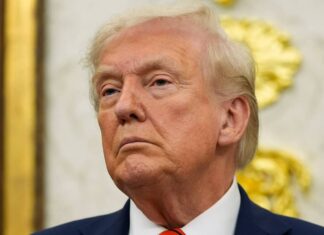By Francis Ogwo
The exchange rate at the black market depreciated at N480/$1 on Monday while the exchange rate at the parallel market closed at N477/$1 on the previous trading day of January 22, 2021, which is a N3 drop.
Experts have said Naira’s free fall can be attributed to demand pressure in the foreign exchange market as economic activities resumed in earnest following the end of the Christmas and New year holidays.
Forex operators had also said that an increase in demand from Nigerians looking to send their wards back to school abroad has also piled pressure on the demand for the greenback.
A cross-section of importers have also resumed import activities piling pressure on the black market to meet their forex demands.
To streamline supply and ensure there is enough to meet rising demand, the CBN moved to ensure strict monetary control of the forex market, threatening to expel exporters who refuse to remit foreign exchange proceeds in the NAFEX market. It also warned against paying diaspora remittances in naira.
The CBN may have also confirmed the forex pressures businesses are facing in its monetary policy communique of January 26, 2020 when it cited it as a reason for the weak purchasing managers index.
“This weak performance was attributed to the resurgence of the pandemic, foreign exchange pressures, increased costs of production, general increase in prices and decline in economic activities.”
At the NAFEX window, the Naira depreciated against the dollar at the Investors and Exporters (I&E) window on Tuesday, closing at N394/$1.
This represents a 50 kobo gain when compared to the N394.50/$1 that it closed on the previous trading day.
The opening indicative rate was N393.60 to a dollar on Tuesday, representing a 30 kobo drop when compared with the N393.30 to a dollar that was recorded on Monday, January 25, 2021.
The N396/$1 was the highest rate during intra-day trading before it closed at N394 to a dollar. It also sold for as low as N390/$1 during intra-day trading.
Forex turnover at the Investor and Exporters (I&E) window rose significantly by 170.9% on Tuesday, January 26, 2021.
According to a recent data, forex turnover increased from $39.99 million on Monday, January 25, 2021, to $108.34 million on Tuesday, January 26, 2021.
Brent crude oil price rose to about $55.87 on Wednesday morning as US crude stockpiles decrease by about 5.2 million barrels last week.
A higher crude oil draw (a decrease in crude oil inventory) is attributed to higher refining activities in the world’s largest economy.
Oil prices have been dragging since last week after the IEA released a report that slashed its outlook for oil in 2021.
According to the IEA, “Global oil demand is expected to recover by 5.5 mb/d to 96.6 mb/d in 2021, following an unprecedented collapse of 8.8 mb/d in 2020. For now, a resurgence in Covid-19 cases is slowing the rebound, but a widespread vaccination effort and an acceleration in economic activity is expected to spur stronger growth in the second half of the year.
“After falling by a record 6.6 mb/d in 2020, world oil supply is set to rise by over 1 mb/d this year, with OPEC+ adding more than those outside the bloc. There may be scope for higher growth given our expectations for further improvement in demand in 2H21. After holding flat at 92.8 mb/d in December, global supply is rising this month with OPEC+ due to ramp up during January.
Nigeria needs oil prices to stay above $50 to balance its budget and improve on its 2021 revenue projection of N6.6 trillion for the year.
Nigeria’s 2021 budget includes a target crude oil benchmark price of $40/barrel and crude oil production of 1.86 million barrels per day.
Nigeria has a production capacity of 2.5 million barrels per day but is subject to OPEC’s crude oil production cuts, which are expected to help sustain higher oil prices.
The higher oil prices and steady production output have positively impacted Nigeria’s external reserves, rising sharply to $36.304 million according to central bank data dated January 14, 2020, the highest level since July 2020.











